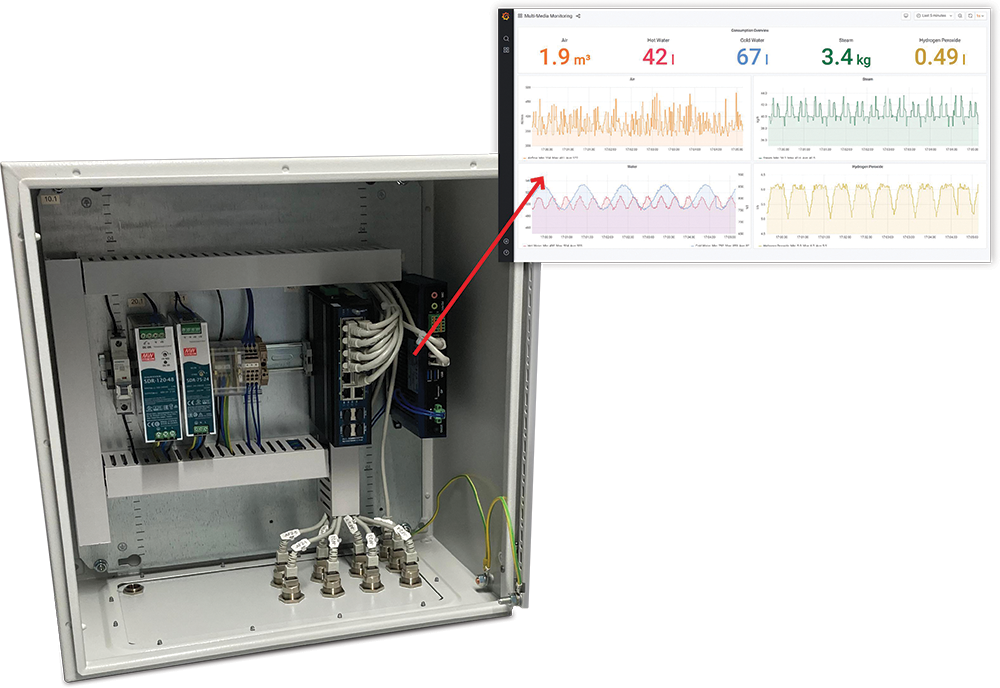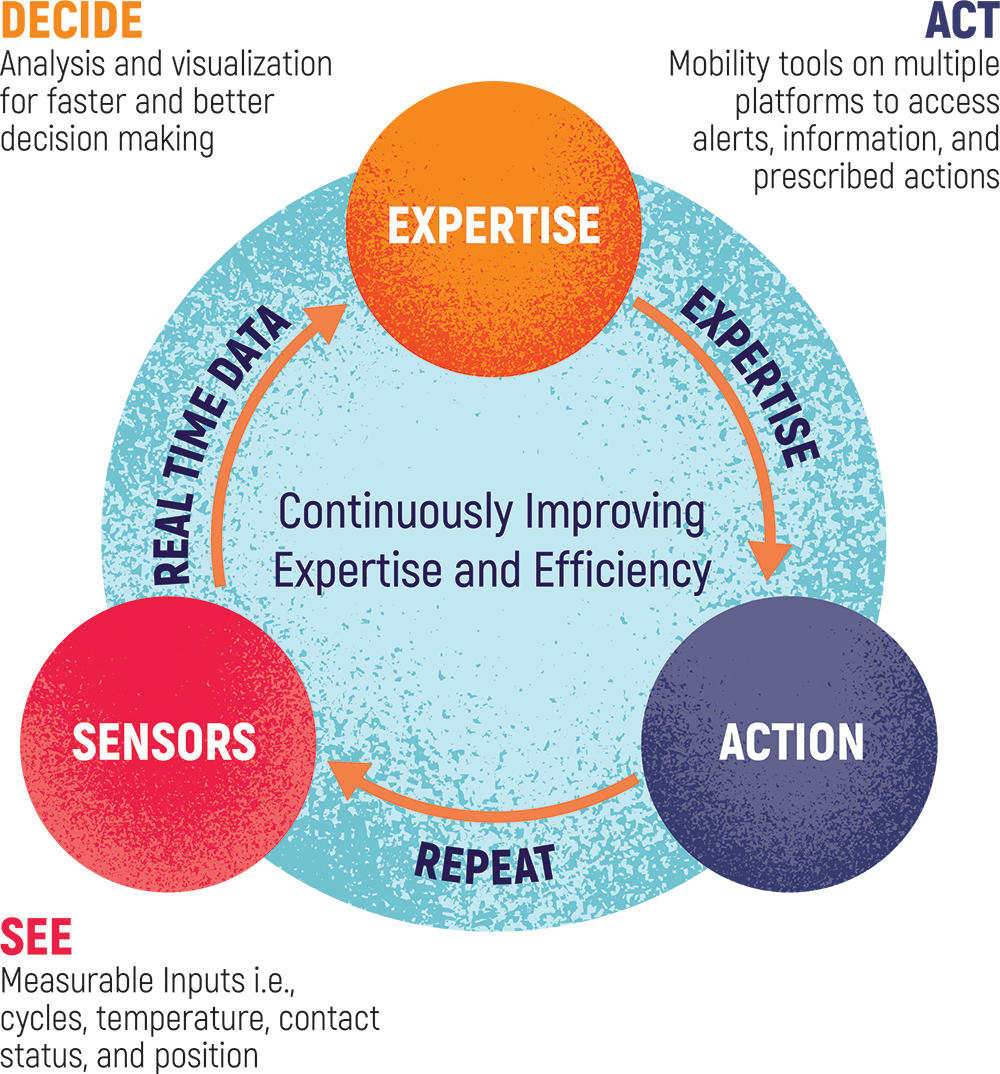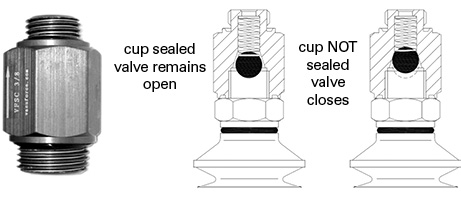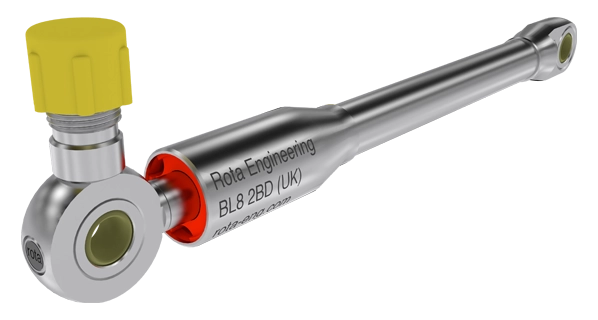Using Multimedia Monitoring to Optimize Energy Consumption
By Eugenio F. da Silva Neto, Product Manager, IIoT Applications, Emerson.
Studies have demonstrated that a quarter of global emissions are generated by industrial processes.1 Many industries, including food and beverage manufacturers, seek more effective tools to reduce industrial energy use and help lower global emissions levels. To do this, long-term sustainability strategies are needed that can reliably decarbonize operations.
What are the elements of a successful industrial sustainability strategy? Fundamentally, solutions need to use less energy and perform existing processes more efficiently. Real-time system data is key and multimedia monitoring of utilities such as compressed air systems can supply that data. Multimedia monitoring gives manufacturers greater visibility into utility consumption, so they can analyze system performance and take control to reliably reduce utility use while simultaneously improving food and beverage production efficiency and productivity.
Focus on Utilities to Reduce Energy Use
Food and beverage companies, faced with increasing costs and heavy competition, place a high priority on identifying waste in their energy use, to better control energy consumption in bottling lines and food processing lines. In these kinds of plants, compressed air systems are major energy users — a typical manufacturing facility that makes extensive use of pneumatics and compressed air actuators can dedicate 20-30% of its electricity use to producing and supplying compressed air throughout the plant.
Yet up to 30% of compressed air can be lost due to leaks and suboptimal utilization, costing about $43k per machine. Finding and correcting these leaks is often costly and inefficient. About 75% of businesses manually test for leaks. However, standard manual tests are periodic. This means leaks can grow between tests. In comparison, continuous compressed air monitoring allows manufacturers to quickly detect and address early-stage leaks, reducing compressed air use by 20-30% and improving energy efficiency as well as overall equipment effectiveness (OEE).
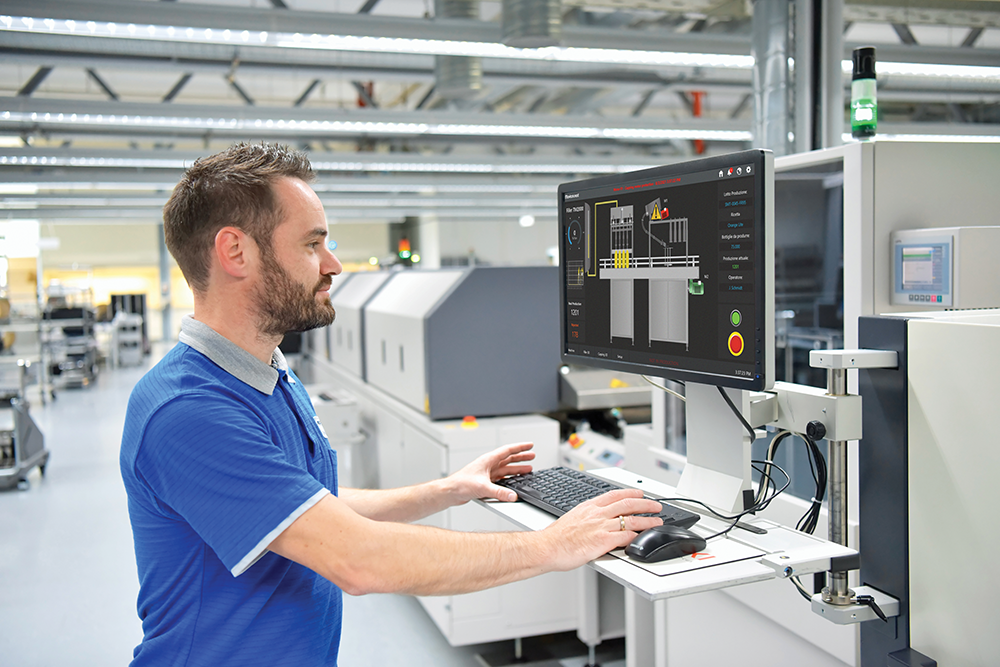
Multimedia monitoring solutions include intelligent sensors and smart devices, a programmable automation controller (PAC) or edge device, open standard technology with secure connectivity and advanced analytics software. By replacing manual, periodic maintenance with continuous compressed air monitoring, food and beverage manufacturers can gain real-time visibility and control over energy use, equipment health and processes.
Continuously monitoring airflow and then aggregating and visualizing data, food processing and bottling line operators leverage the power of intelligent automation tools to anticipate pneumatic energy trends, visualize energy optimization opportunities and spot leaks early on.
These companies can significantly reduce energy consumption, increase sustainability and quickly achieve net-zero goals by fixing leaks and optimizing pneumatic-related processes. Food and beverage companies that typically spend over $1 million per year on energy costs can avoid over $80k in compressed air wastage per year.
See, Decide, Act to Optimize Energy Use
When a manufacturer integrates multimedia monitoring into the system of a food processing facility, it sets the See, Decide, Act cycle in motion and has the potential to continuously improve operator expertise and efficiency. The See, Decide, Act cycle continuously optimizes operations efficiency in terms of energy utilization and emissions reduction, but it can also improve worker safety and process and increase reliability and uptime. During the See stage in compressed air monitoring, intelligent sensors across the plant floor are securely connected to a factory network that continuously monitors airflow. Real-time data feeds provide insight into pneumatic system energy consumption, compressed air utilization and pneumatic systems health.
The Decide stage includes analysis of collected data into a PAC or edge device equipped with advanced analytics software that continuously aggregates, contextualizes, and translates data into actionable insights that scale on premises or in the cloud. Multimedia monitoring solutions can detect anomalies, excessive condensation, and energy loss in systems, as well as monitor and trend resources usage. Using the analytics dashboard, operators can visualize trends like energy efficiency and use insights to make fast, informed decisions.
During the Act stage, this solution sends notifications that contain clear instructions and prescribed actions on how to improve efficiency and find leakages. By following these directives, personnel can resolve issues faster and companies can waste less energy.
Achieve Net-Zero Goals Through Improved Visibility
Multimedia monitoring provides the kind of tools today’s food and beverage companies are looking for to gain real-time visibility and more precise control of their utility energy consumption. The use of key process inputs, such as air, water, steam, chemicals, gases and electricity, can be monitored and analyzed in real time, so effective and agile decisions about adjustments to compressed air systems can be made to help meet net-zero targets.
When companies that are heavy users of pneumatic technologies incorporate real-time compressed air monitoring into their operations, identifying and correcting leaks earlier and faster, the energy savings often prove to be dramatic.
Implementing multimedia monitoring is not complex. To begin, start with one machine, line or factory. Identify and track how to improve energy use in one area of opportunity, prove a return on investment (ROI) and then scale up from there.
For food and beverage companies, monitoring compressed air does more than help meet net zero energy use goals. It can help improve equipment efficiency and ultimately lower costs. Smarter factories leverage sensors and utility monitoring systems to gather data, analyze where energy is being wasted, and take the positive steps to continuously improve sustainability and achieve their most critical goals.


